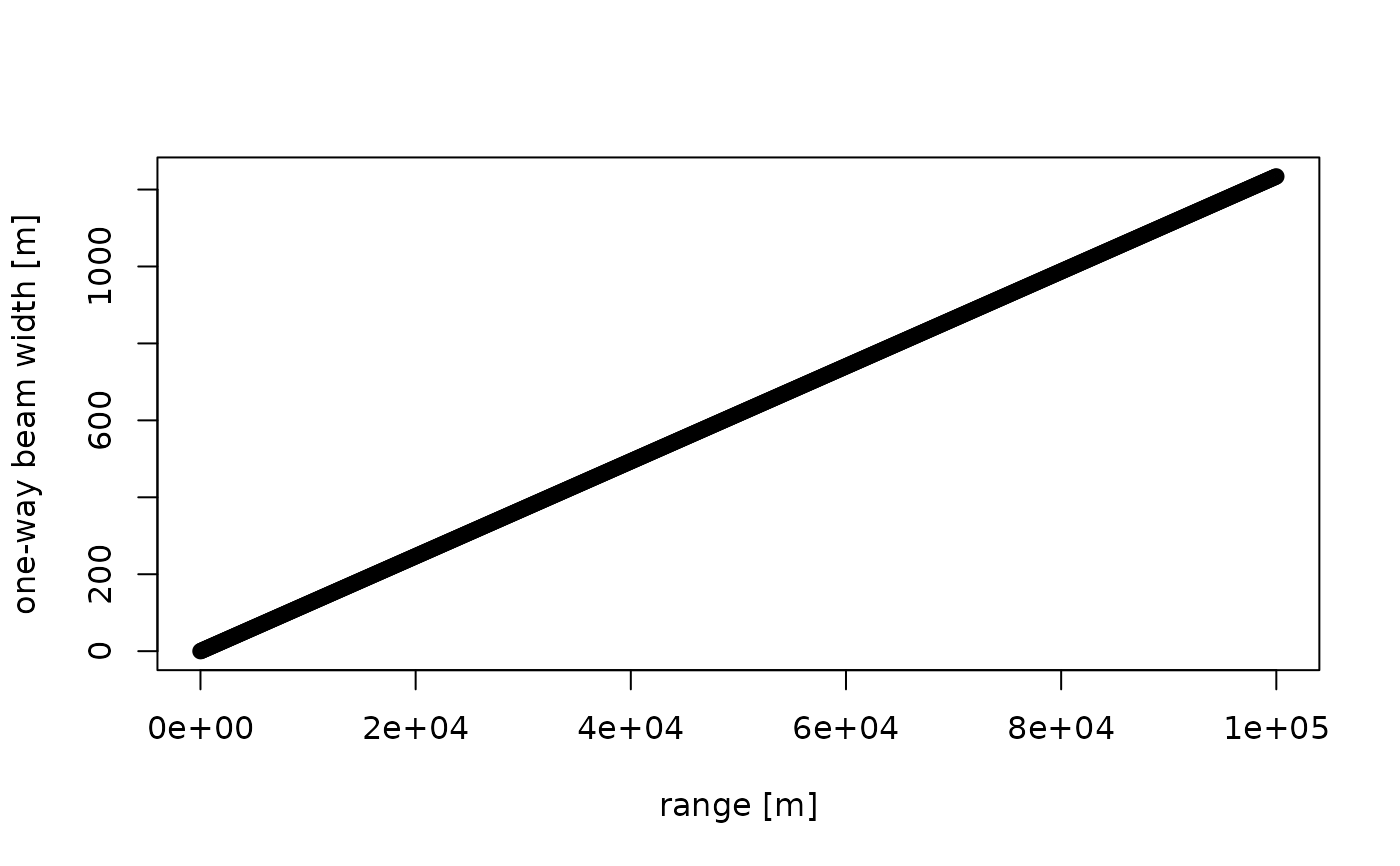Calculates the width of a radar beam as a function of range and beam angle.
Arguments
- range
Numeric. Range, i.e. distance from the radar antenna, in m.
- beam_angle
Numeric. Beam opening angle in degrees, typically speciefied as the angle between the half-power (-3 dB) points of the main lobe for the one-way antenna pattern.
- path
Character. One of
two_way(default) orone_wayfor specifying the effective beam width for the radar's antenna pattern as it transmits a signal (one_way), or as it transmits and receives a signal (two_way).
Details
The two-way beam is effectively narrower than the one-way beam because
the power distribution is squared in the two-way path (transmit and receive).
Using the normal approximation for the beam power profile, this means the two-way
beam width equals the one-way beam width divided by sqrt(2).
See also
Other beam_functions:
beam_distance(),
beam_height(),
beam_profile(),
beam_profile_overlap(),
beam_range(),
gaussian_beam_profile()
Examples
#' # Beam width in meters at 10 km range:
beam_width(10000)
#> [1] 123.4103
# Define ranges from 0 to 1000000 m (100 km), in steps of 100 m:
range <- seq(0, 100000, 100)
# Plot the two-way beam width as a function of range:
plot(range, beam_width(range), ylab = "two-way beam width [m]", xlab = "range [m]")
 #' # Plot the one-way beam width as a function of range:
plot(range, beam_width(range), ylab = "one-way beam width [m]", xlab = "range [m]")
#' # Plot the one-way beam width as a function of range:
plot(range, beam_width(range), ylab = "one-way beam width [m]", xlab = "range [m]")

